Do you have a question about the Celestron AstroMaster 130 EQ and is the answer not in the manual?
Safety precautions for telescope use, including sun viewing and handling.
Instructions for assembling the tripod and attaching the accessory tray.
Procedure for mounting the equatorial mount onto the tripod head.
Steps to install the counterweight bar and balance the telescope.
Connecting the R.A. and Dec. slow motion control cables to the mount.
Securing the telescope optical tube to the equatorial mount.
How to install the diagonal and eyepieces for refractor telescopes.
Procedure for attaching eyepieces to Newtonian telescope focusers.
Guidance on manually adjusting the telescope's position.
How to balance the telescope mount in the Right Ascension axis.
How to balance the telescope mount in the Declination axis.
Adjusting the equatorial mount for proper alignment.
Procedure for setting the mount's altitude angle for polar alignment.
Explanation of how eyepieces affect image orientation in refractors and Newtonians.
Instructions on how to focus the telescope using the focus knob.
Steps to align the Star Pointer finderscope with the main telescope.
Formula and explanation for calculating telescope magnification.
Method for calculating the actual field of view using magnification.
Tips for optimal visual observing and avoiding common pitfalls.
Introduction to the celestial sphere and coordinate systems (RA/DEC).
Explanation of how stars appear to move due to Earth's rotation.
Using the latitude scale for polar alignment.
Using Polaris to approximately align the telescope's polar axis.
Identifying key stars to locate the North Celestial Pole (NCP).
Polar alignment procedures specific to the Southern Hemisphere.
Using Sigma Octantis for approximate polar alignment in the south.
Methods for locating the South Celestial Pole using star patterns.
Advanced method for accurate polar alignment using star drift monitoring.
Procedure for aligning and using the telescope's setting circles.
Instructions for installing the optional motor drive onto the mount.
How to power, adjust speed, and use the motor drive for tracking.
Tips for observing the Moon, including best phases and detail enhancement.
Guidance on observing planets like Venus, Mars, Jupiter, and Saturn.
Safety precautions and methods for observing the Sun.
Advice for observing objects beyond the solar system, like nebulae and galaxies.
Understanding transparency, sky illumination, and seeing for optimal viewing.
Methods for prime focus and piggyback astrophotography.
Overview of planetary, CCD, and terrestrial photography with telescopes.
Proper methods for cleaning telescope lenses and mirrors.
Introduction to optical alignment (collimation) for Newtonian telescopes.
Procedure for aligning the primary mirror of a Newtonian telescope.
Using stars for precise collimation adjustments.
Safety precautions for telescope use, including sun viewing and handling.
Instructions for assembling the tripod and attaching the accessory tray.
Procedure for mounting the equatorial mount onto the tripod head.
Steps to install the counterweight bar and balance the telescope.
Connecting the R.A. and Dec. slow motion control cables to the mount.
Securing the telescope optical tube to the equatorial mount.
How to install the diagonal and eyepieces for refractor telescopes.
Procedure for attaching eyepieces to Newtonian telescope focusers.
Guidance on manually adjusting the telescope's position.
How to balance the telescope mount in the Right Ascension axis.
How to balance the telescope mount in the Declination axis.
Adjusting the equatorial mount for proper alignment.
Procedure for setting the mount's altitude angle for polar alignment.
Explanation of how eyepieces affect image orientation in refractors and Newtonians.
Instructions on how to focus the telescope using the focus knob.
Steps to align the Star Pointer finderscope with the main telescope.
Formula and explanation for calculating telescope magnification.
Method for calculating the actual field of view using magnification.
Tips for optimal visual observing and avoiding common pitfalls.
Introduction to the celestial sphere and coordinate systems (RA/DEC).
Explanation of how stars appear to move due to Earth's rotation.
Using the latitude scale for polar alignment.
Using Polaris to approximately align the telescope's polar axis.
Identifying key stars to locate the North Celestial Pole (NCP).
Polar alignment procedures specific to the Southern Hemisphere.
Using Sigma Octantis for approximate polar alignment in the south.
Methods for locating the South Celestial Pole using star patterns.
Advanced method for accurate polar alignment using star drift monitoring.
Procedure for aligning and using the telescope's setting circles.
Instructions for installing the optional motor drive onto the mount.
How to power, adjust speed, and use the motor drive for tracking.
Tips for observing the Moon, including best phases and detail enhancement.
Guidance on observing planets like Venus, Mars, Jupiter, and Saturn.
Safety precautions and methods for observing the Sun.
Advice for observing objects beyond the solar system, like nebulae and galaxies.
Understanding transparency, sky illumination, and seeing for optimal viewing.
Methods for prime focus and piggyback astrophotography.
Overview of planetary, CCD, and terrestrial photography with telescopes.
Proper methods for cleaning telescope lenses and mirrors.
Introduction to optical alignment (collimation) for Newtonian telescopes.
Procedure for aligning the primary mirror of a Newtonian telescope.
Using stars for precise collimation adjustments.
| Aperture | 130 mm |
|---|---|
| Focal Length | 650 mm |
| Focal Ratio | f/5 |
| Mount Type | Equatorial |
| Optical Design | Newtonian Reflector |
| Highest Useful Magnification | 307x |
| Lowest Useful Magnification | 19x |
| Limiting Stellar Magnitude | 13.1 |
| Resolution (Rayleigh) | 1.07 arc seconds |
| Resolution (Dawes) | 0.89 arc seconds |
| Light Gathering Power | 345x |
| Optical Tube Length | 24 inches |
| Eyepieces | 20mm, 10mm |
| Finderscope | StarPointer |
| Optical Coatings | Aluminum |
| Tripod | Steel |
| Optical Tube Weight | 14 lbs |
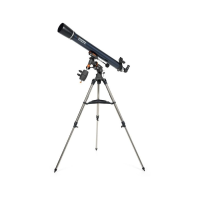
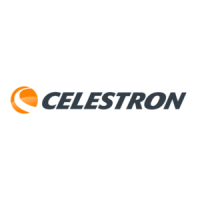
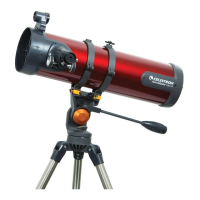



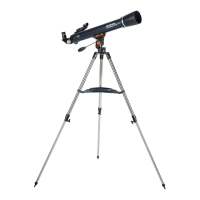


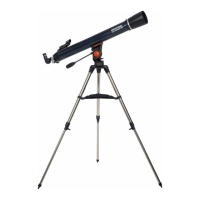
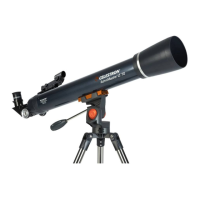

